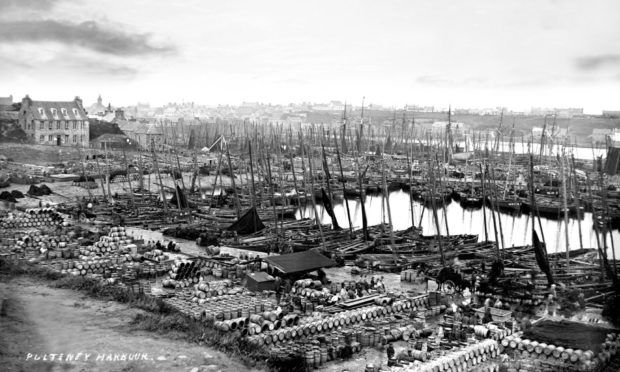Wick Harbour was once renowned as Europe’s busiest herring port and now some renewed efforts are being made to highlight the area’s rich history.
The Pulteneytown part of the community was masterminded by engineer Thomas Telford in the 18th century, and is the only fully executed town plan which he carried out for the British Fisheries Society.
It was also the organisation’s most successful investment, becoming a bustling hub of activity during the herring boom of the 19th century.
Although a lot may have since changed about the harbour, and the fishing vessels using it are far fewer in number, much remains largely the same since those halcyon days.
The design of the 19th century inner and outer harbours is still intact, and many of the surrounding Georgian and Victorian industrial and residential buildings have been well maintained – meaning it is regarded as something of a historic and architectural gem.
Caithness residents are now being asked to share their views on how best to protect the “unique” part of the county, which local leaders say is of national importance.
Chairwoman of Highland Council’s Caithness committee, Nicola Sinclair, said: “What shines through from these papers is how very special and unique Pulteneytown is, not just in a Highland context but nationally.
“I feel we need to do more to celebrate and promote that history, and crucially these plans help us protect it for future generations.”
Jennifer Harvey, development officer for the Pulteneytown People’s Project charity, is hopeful that many locals will respond to the new consultation.
She said: “It’s great that Pulteneytown is being highlighted, along with the importance of its unique architecture.
“The public of Wick recently contributed in a consultation about the regeneration of our town centre.
“Open consultation led to conversation and concern about buildings and other areas of the town that have fallen into disrepair.
“People have genuine interest in their surroundings and heritage so this will be a welcome opportunity to be involved again.”
Wick and Pulteneytown remained separate burghs before being merged in 1902.
Outlining the area’s architectural importance, a council spokesman said: “There is a predominance of original Georgian buildings and a small number of later Victorian buildings, with little historic redevelopment on original lots.
“Buildings and structures exhibit construction methods individual to Wick, with locally quarried Caithness stone worked in traditional ways to create distinctive construction details.”
The local authority has outlined plans to expand the area’s conservation boundary to safeguard various periodic properties and the town’s historic harbour for future generations.
Two small conservation areas, Argyle Square and Harbour Place/Terrace, were designated in Pulteneytown by Highland Regional Council in 1970 before being incorporated into a larger conservation area in 2000.
Highland Council officials want members of the Caithness Committee to back a fresh management plan, designed to preserve more of the town’s history.
The proposals have been compiled in two draft documents, Wick Pulteneytown Conservation Area Appraisal (CAA) and a Conservation Area Management Plan (CAMP), which will be put forward for public consultation.
Iain Leith, chairman of Wick Heritage Association, welcomed the proposals.
He said: “The CAA and CAMP includes a fresh assessment of the Pulteneytown Conservation Area boundary to ensure it accurately reflects what is important in terms of our heritage.”
The council is this week launching a six-week public consultation period providing an opportunity for the public to view and comment on both documents.
The papers will be available to view through an online consultation portal from Thursday.
Feedback will be recorded and considered before a final draft is prepared and presented to the Caithness Committee later this year.
